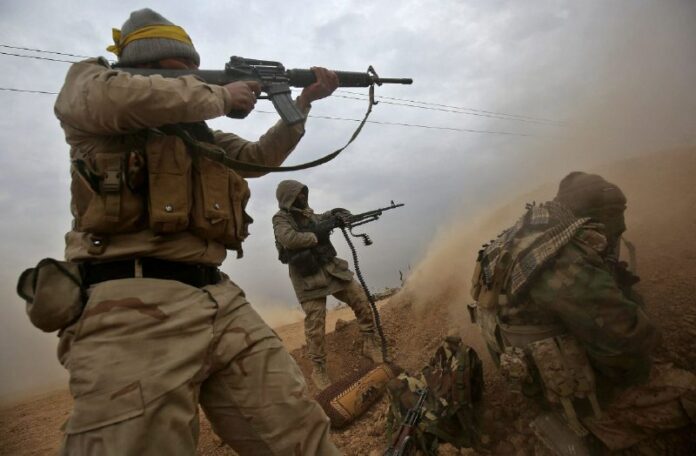
📖 Rule by Militia
🔶️ Militias are often taken as a sign of weak or absent government, the result of renegade actors operating in the wake of state collapse. Such a narrative could be told through a roll call of fallen dictators—from Mohamed Siad Barre in Somalia through to Saddam Hussein in Iraq and Muammar Gaddafi in Libya—whose removal seemed to result in the death of the state and the emergence of militias that pick over its carcass. But these lapsarian lessons about the evils that befall a society after state collapse occlude more than they reveal. The reality is that many militias active around the globe today were created by states. In the aftermath of the economic crises of the 1980s, governments wracked by debt found militias an efficient way of managing restive populations.
🔶️ For much of European history, militias and other nonstate military actors played a part in state policy. Feudal military mobilization, for example, largely relied on assembling coalitions of aristocratic houses and their levies. When this system broke down, it was replaced by a marketplace for mercenaries in which access to force depended on capital reserves. By the eighteenth century, half the Prussian army was comprised of hired troops, and all the European states except Switzerland relied on foreign fighters. These mercenaries were sometimes drawn from private armies. Just as often, European rulers would hire out their own forces to other sovereigns.
🔶️ The state itself was just one of many forms of military power that vied with each other, none of them necessarily more legitimate than any other. If the state won, it was because, as Charles Tilly puts it in his famous article on state- and war-making, “small groups of power-hungry men fought off numerous rivals and great popular resistance in the pursuit of their own ends, and inadvertently promoted the formation of national states.” In this telling, Weber’s legitimation of state violence was the winner’s prize bestowed on the most distinguished group of bandits. The state became the form that seized the mode of predation.
🔶️ The second key characteristic of the contemporary militia is thus that it exists—much like the mercantile companies of seventeenth- and eighteenth-century Europe—as a military force, political organ, and business all at the same time. Their control of real estate, banking, and commercial services ensures their autonomy from the state. It also occludes the role of global commodity markets, which have obscurity built into them, in enabling militia economies. A U.S. Government Accountability Office review of conflict minerals (which include tin, tungsten, tantalum, and gold) from 2022 determined that half the companies surveyed couldn’t determine where the minerals they used came from, at all.
🔶️ Within the nation-state system, as Amitav Ghosh once suggested, there are increasingly two classes of country. In one class, borders are believed in, the state promises to offer at least a vestige of security, and governments have the capacity to act relatively autonomously from the ethnic and economic forces that constitute them. In the other class of country, the state is a fiction insisted upon by the international community. State-building efforts in these countries have only led to more power being vested in rentier elites, dependent on resources from elsewhere, who have fractured the nations over which they rule.
🔶️ Changing this dynamic is not easy. What is certain is that the liberal dream of a Weberian state will offer no solutions; the theater of state-building has clearly run its course. Any alternative would need to attend to the supply chains and international commodity markets that enable rule by militia. Rather than propping up fictional governments, the international community could focus on the real motor of militia membership: a growing surplus of young women and men thrown off by the global economy which cannot be absorbed by the countries they live in unless massive economic transformations take place at a planetary scale.
📎 Boston Review
Rule by Militia
Militias are often seen as a sign of weak or absent government, typically emerging in the aftermath of state collapse. The conventional narrative portrays militias as rogue actors taking advantage of power vacuums left by toppled dictators. However, the reality is more complex than this simplistic view suggests.
In many cases, militias around the world were actually created and supported by states themselves. Following the economic crises of the 1980s, debt-ridden governments turned to militias as a means of managing unrest among their populations. This strategy proved to be an efficient way for governments to maintain control in challenging times.
Throughout European history, militias and other nonstate military actors have played roles in state policy. Feudal military mobilization relied on aristocrats and their levies, while the mercenary marketplace flourished in the eighteenth century. These mercenaries were sometimes aligned with private armies, showcasing the diverse landscape of military power in earlier eras.
The contemporary militia is a multifaceted entity, serving as a military force, political organization, and business all at once. With control over real estate, banking, and commercial services, militias operate autonomously from the state while profiting from global commodity markets. This economic independence further complicates the relationship between militias and state authority.
In today’s world, there are two classes of countries, as suggested by writer Amitav Ghosh. In one class, states are stable and autonomous, while in the other class, the state is a fragile construct upheld by international pressure. State-building efforts in these countries have often backfired, reinforcing the power of rentier elites and exacerbating internal divisions.
Addressing the issue of rule by militia requires a reevaluation of traditional state-building approaches. Instead of propping up fictional governments, the international community should focus on the root causes of militia membership. Economic transformations on a global scale are needed to absorb the surplus of young people disenfranchised by the current system.
The liberal dream of a Weberian state may no longer offer viable solutions in a world where militias wield significant power. To challenge the dominance of militias, we must confront the underlying economic forces that sustain their operations. Only through a comprehensive and coordinated effort can we hope to overcome the challenges posed by rule by militia.
Source: Boston Review

